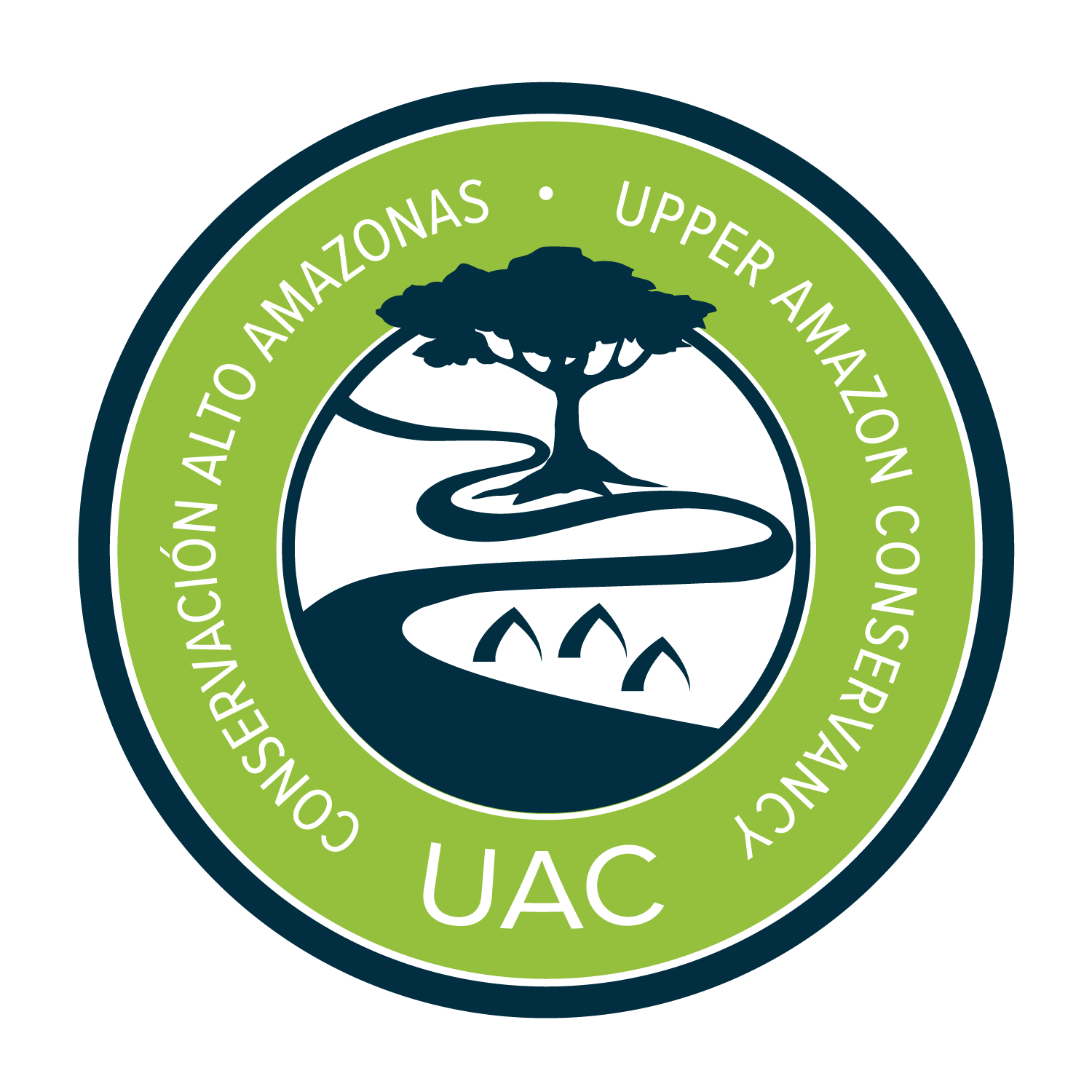Flora and Fauna Monitoring Strengthens Community-Led Conservation in the Yurúa Forest Concession
Group photo of Peru’s Parks Service, UAC, and native community members during monitoring activities in the Yurúa Communal Conservation Concession.
From February 20 to 23, 2025, specialists from Peru’s Protected Areas Agency (SERNANP) and Upper Amazon Conservancy (UAC), together with members of the Indigenous communities that form the Yurúa Community Conservation Association (ACC-Yurúa), carried out vital biodiversity monitoring efforts in the Yurúa Communal Conservation Concession. This initiative, supported by the U.S. Fish and Wildlife Service (USFWS), aims to build local capacity to protect threatened species and promote sustainable land stewardship across the 46,553-hectare concession.
During the expedition, the team confirmed the presence of the Pichico Blanco (Leontocebus weddelli melanoleucus), or White-Mantled Tamarin, an endemic primate species considered essential to the health of Yurúa’s ecosystems. This aligns with the goals of the USFWS project, which is focused on empowering local communities to manage and safeguard key species and habitats.
Pichico Blanco
White-mantled tamarin
Leontocebus weddelli melanoleucus
Photo: Glauco Oliveira
A Boost for Conservation and Sustainable Development
Arsenio Calle, head of the Alto Purús National Park, emphasized the broader significance of the monitoring work:
“This effort brings national and international visibility to the Concession, supporting conservation and sustainable development initiatives for the Yurúa communities, such as community-based tourism and scientific research.”
He also noted that White-Mantled Tamarin is crucial for safeguarding the Amazonian headwaters, which play a critical role in maintaining ecological balance and delivering key ecosystem and environmental services.
The Communities' Commitment
Kennedy Pérez, vice president of ACC-Yurúa and member of the Native Community of Beu, spoke to the communities’ enduring commitment to territorial protection:
“The concession was created by nine Indigenous communities with the purpose of protecting our territory. Here we live among a great diversity of flora and fauna, including timber species and medicinal plants that have yet to be studied. We remain vigilant to prevent illegal use of resources or invasions.”
Findings and the Path Forward
In addition to the the White-Mantled Tamarin, the monitoring team recorded sightings of other important species, including the Black-faced Spider Monkey (Ateles chamek), Red Howler Monkey (Alouatta seniculus), Black-capped Capuchin (Sapajus apella). Among the emblematic birds identified were the Grey-winged Trumpeter (Psophia crepitans), and reptiles like the Amazon Tree Boa (Corallus hortulanus). High ecological value trees were also identified, such as Mahogany (Swietenia macrophylla) and Kapok (Ceiba pentandra). However, signs of poaching and illegal fishing were detected near the border with Brazil, underscoring the urgent need to bolster territorial monitoring and community enforcement of the Concession.
In line with the project’s objectives, periodic monitoring efforts will be enhanced, with protection strategies informed by both scientific research and ancestral knowledge. These activities are not only generating vital data on biodiversity but also reinforcing community-led land management.
Next steps include strengthening territorial security, continuing the implementation of the SMART monitoring tool, and deepening inter-community collaboration to protect this ecologically invaluable region. The continued, active involvement of Indigenous communities remains fundamental to ensuring the long-term conservation of species and the sustainable future of the Yurúa landscape.






